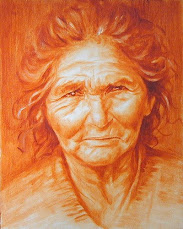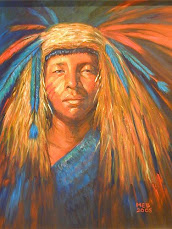Old Dogs, New Tricks
It was just over a year ago that I opened my online shop at etsy.com. I was convinced to do so at the urging of a wonderful friend who has played a huge role in pushing me in the right direction over the past few years. She had opened a store for her marvelous purses, and felt I would find a market for my jewelry there as well. While I've sold more jewelry since then outside of my etsy store than through it, I have no regrets. Opening that store has propelled me into the internet and its many wonders in ways I find astonishing.
My entire relationship with the internet was considerably delayed compared to other Americans. When Americans were just beginning to flex their "surfing" muscles, I was living in Burma, a country so repressed and dictatorial that, in one instance, mere possession of a fax machine led to the death in prison of a wonderful man we knew there. Rather than joining the large crowds whose morning ritual included a computerized voice insisting "You have mail" along with coffee and the paper, we moved to Cuba. Allowing connection to an unfettered source of information was too threatening to Fidel and his minions, so another two years passed before we moved to Peru, where connection was limited only by the vagaries of electrical power, and the internet's many wonders began to open for me like the petals of a flower.
Yet, for the following six years while I lived in Peru and Costa Rica, I was busy painting, mothering, befriending, exploring, entertaining, and the like, so I used it mainly for connecting with far flung friends and family, finding facts for my elementary school-aged child, researching medical symptoms, and the like. I was way behind the learning curve in chatroom lingo and other signs of internet competence.
After I opened the shop at etsy, I began reading the forums there, and was amazed at how computer-literate many people were, and I realized that I was not only behind the curve because of where I had lived, but there was also a generational thing going on. If there were a forum post involving computer code issues, for example, I found I couldn't understand a word people wrote, and there were many like me, "of a certain age", who felt completely lost in that world.
I'm the impatient, I-can-figure-it-out-on-my-own kind of person who ignores instructions while assembling furniture or operating equipment. That attitude, however, only gets you so far in terms of gaining internet knowledge. So, while researching what such things as ROFL, and IMO and the like meant, I also began learning about blogs, and realizing how they can assist in promoting one's etsy shop. So, one day recently, on the spur of the moment, I started this blog. I have learned about linking posts, cutting and pasting html code, pinging, and all sorts of things which wouldn't have made a bit of sense to me a year ago. So, for all of those internet-challenged or -fearful folks out there, I'm a perfect example of how old dogs can indeed learn new tricks! Woof woof! ROFL!




















